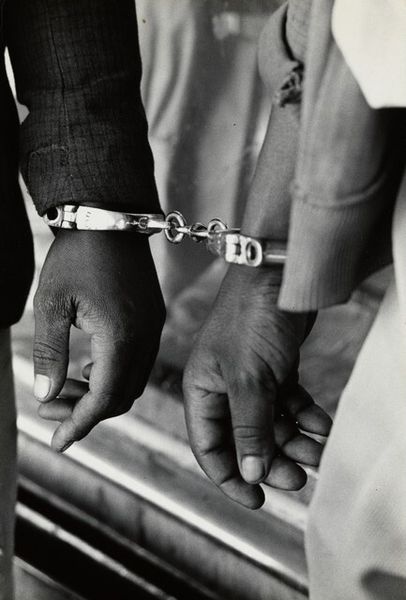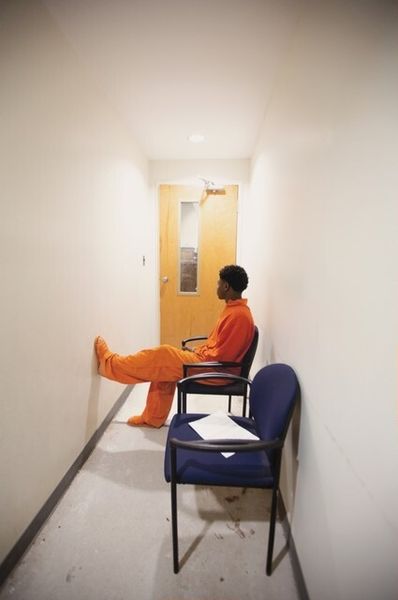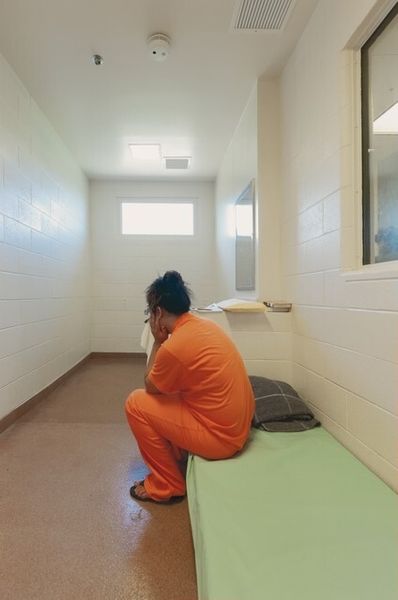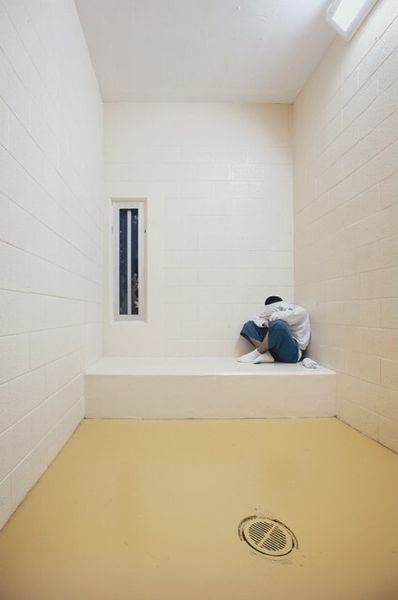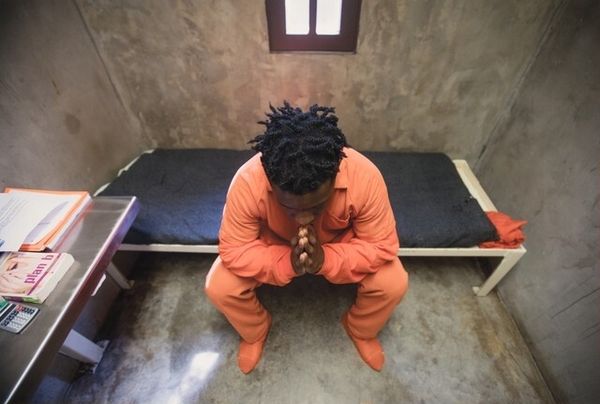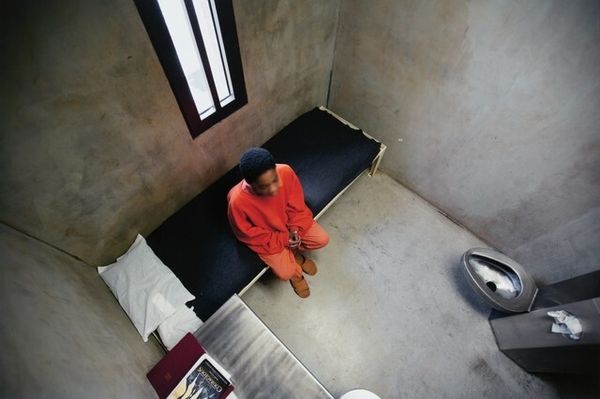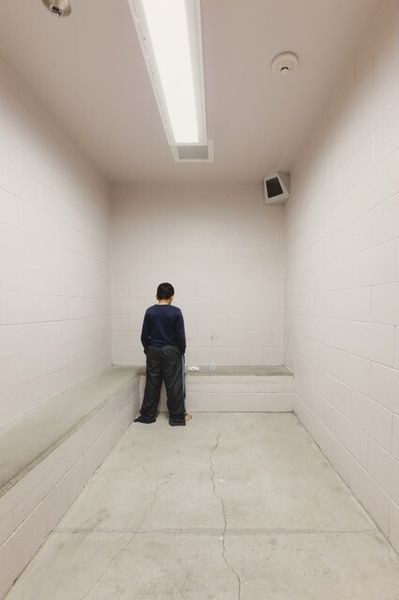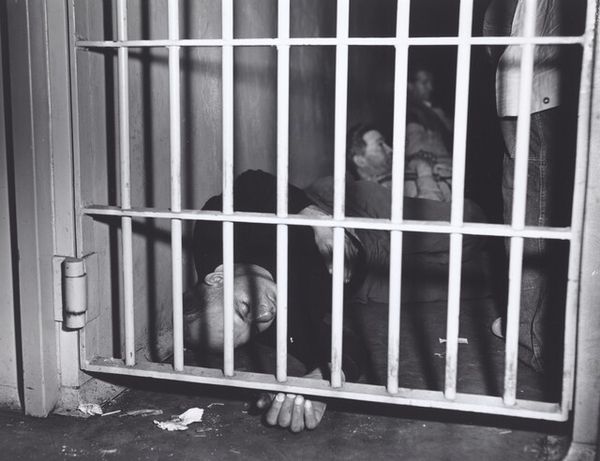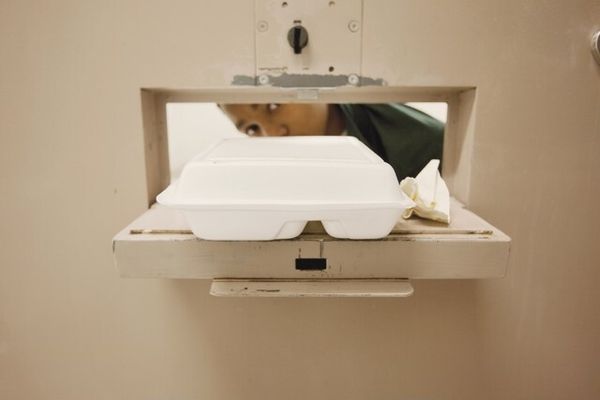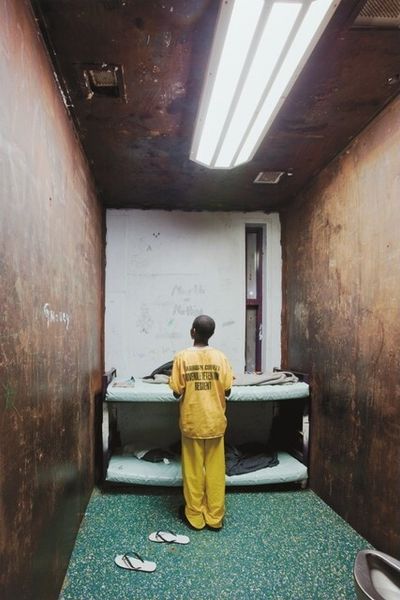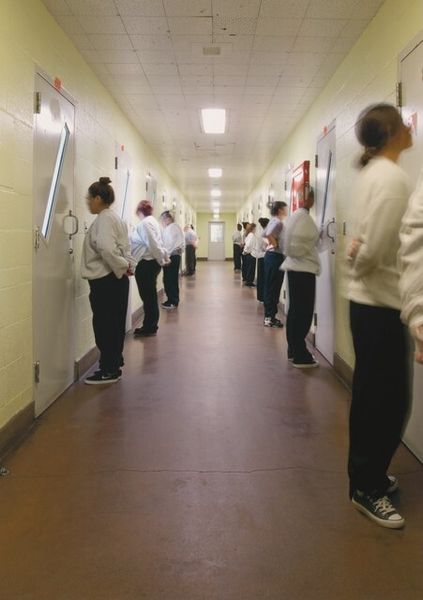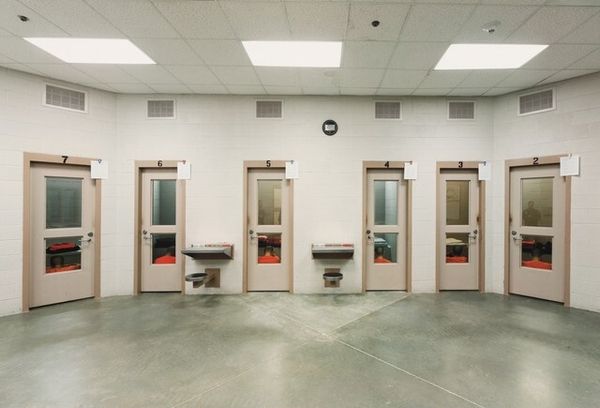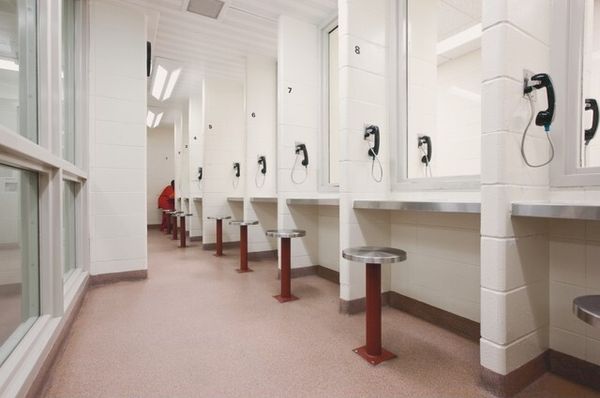
photography
#
portrait
#
contemporary
#
photography
#
realism
Dimensions: image: 55.9 × 37.2 cm (22 × 14 5/8 in.) sheet: 61 × 43.2 cm (24 × 17 in.)
Copyright: National Gallery of Art: CC0 1.0
Curator: This is "Wisconsin," a 2009 photograph by Richard Ross. It depicts the torso of a person in a grey sweatsuit, hands clasped, wearing handcuffs. Editor: The grey is so pervasive; it's like a fog. It feels sterile and isolating. And the shiny metal of the cuffs draws all the light. Curator: The image comes from Ross’s project “Juvenile in Justice,” where he documented the confinement of young people across the US. The use of photography here is direct, unflinching. Consider the weight of the juvenile justice system and how Ross’s careful compositions expose its material reality. Editor: The handcuffs become these powerful symbols of restriction and lost potential, and placed front and center as they are, immediately convey constraint. Notice, though, how the clasped hands offer a bit of resistance, as well as suggest quiet resilience. Curator: Yes, that visual tension is crucial. The material facts of confinement - the sweat suit, the handcuffs - speak to the systems at play. Consider, also, the use of institutional clothing, where uniforms erase individuality, and assess the social impact, given who is impacted most often. Editor: Exactly. Grey is an emotionally neutral color. It's almost the non-color. And seeing that repeated across the clothing reduces this person to just an object in the system. It certainly amplifies how society can strip someone of identity. The very minimal monogram almost mocking the lost identity here too, given that this looks like high-end branded streetwear Curator: These pieces often serve to erase a child's individuality. They remove them from the cultural flows of production, fashion, trends, self expression...to contain them. This also points to a commodity chain dependent upon inexpensive materials and cheap labor...all integral to operating institutions and facilities at scale. Editor: Thinking about it, the cuffs, for me, come to represent injustice itself—not just a physical restraint, but all of the intangible limitations that burden some versus others, long before the encounter with the law. Curator: Absolutely. By rendering these oppressive architectures visible, perhaps Richard Ross invites us to examine and hopefully reshape these institutional power structures that dictate the material and, of course, human costs. Editor: It is, without a doubt, a potent image, filled with difficult implications.
Comments
No comments
Be the first to comment and join the conversation on the ultimate creative platform.
